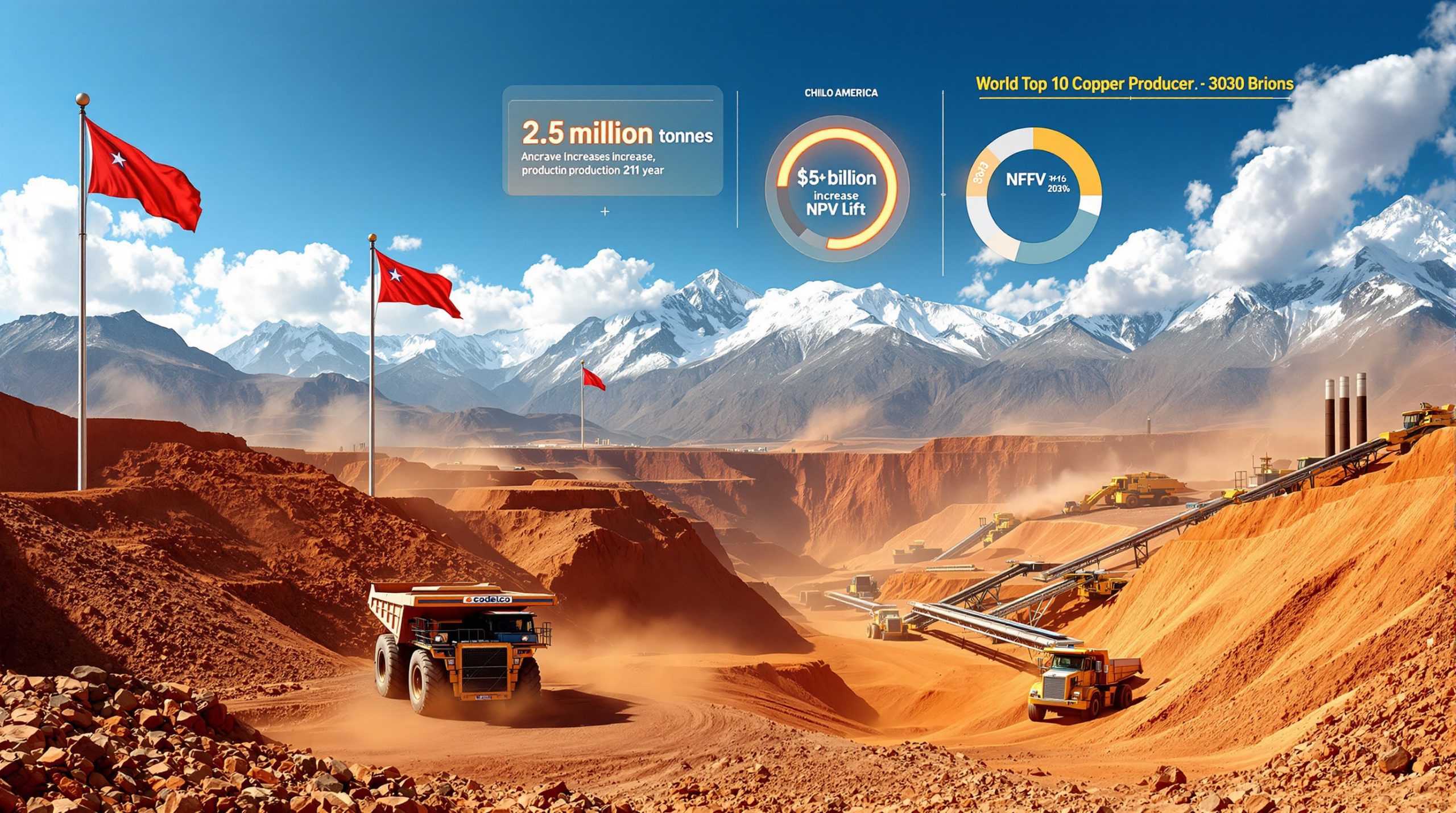Northam Platinum's PGM Market Outlook: Cautious Optimism Amid Structural Changes
The platinum group metals (PGM) market is experiencing a significant transformation in 2025, with prices rising for key metals including platinum, rhodium, and ruthenium. Market indicators such as increasing lease rates reflect increasingly tight supply conditions, while demand continues to grow across multiple sectors. This market tightness comes after years of underinvestment in South African mining operations, creating a structural supply deficit that industry experts believe will persist for years to come.
Current PGM Price Trends and Market Dynamics
Platinum prices have shown strong recovery in 2025, reaching levels that are bringing renewed optimism to producers after years of depressed pricing. The metal's fundamental supply-demand balance has shifted dramatically, with market analysts now projecting a deficit of approximately 1 million ounces for the year.
Rhodium prices are strengthening amid exceptionally tight supply conditions, with lease rates reaching 15% – a clear indicator of physical metal scarcity in the market. This tight supply situation is compounded by declining recycling volumes, which traditionally help balance market shortfalls.
Ruthenium is experiencing increased demand, particularly from technology sectors including data storage and artificial intelligence infrastructure. Some market observers suggest ruthenium could potentially reach price levels comparable to rhodium, representing significant upside potential.
Lease rates remain elevated across the PGM basket: platinum (10%), palladium (4%), and rhodium (15%). These rates, representing the cost of borrowing physical metal, are important indicators of real market tightness and industrial users' urgency to secure supply.
What Factors Are Driving PGM Demand Growth?
Automotive Sector Resilience
Despite global economic uncertainties, automotive catalytic converter demand continues to support PGM consumption. Stricter emissions regulations worldwide are maintaining or increasing PGM loadings in vehicles, even as the industry navigates a complex transition toward electrification.
Autocat loadings are actually rising in many markets as regulations tighten, particularly for gasoline vehicles which require higher rhodium content. This is creating sustained demand even as overall vehicle production rates fluctuate.
The transition to electric vehicles is proceeding more gradually than some early projections suggested, providing continued demand for PGM-containing catalysts through at least 2030 and likely beyond.
Expanding Industrial Applications
Industrial demand for PGMs is diversifying beyond traditional applications, creating new growth vectors for these metals:
- Hydrogen economy development is supporting platinum demand, with fuel cell technologies requiring platinum catalysts
- Growing ruthenium use in data storage technologies and artificial intelligence infrastructure
- Expanding applications in nylon production processes and specialty chemicals
- Continued robust demand from chemical catalysis and petroleum refining sectors
The diversification of industrial applications helps insulate the PGM market from fluctuations in any single sector, creating a more stable long-term demand profile.
Investment and Jewelry Demand
Market observers note strengthening demand from both investment and jewelry sectors:
- Physical investment interest in platinum has increased as prices have begun to recover
- Jewelry fabrication showing signs of recovery in key markets like China and India
- Combined demand from these sectors contributes significantly to market tightness
- Investment sentiment appears to be shifting as supply constraints become more widely recognized
Why is PGM Supply Declining Despite Higher Prices?
South African Production Challenges
The South African PGM industry, which supplies approximately 70% of global platinum and an even higher percentage of rhodium, faces significant South African production challenges:
- Production has fallen from a peak of 5.4 million ounces in 2006 to approximately 3.8 million ounces in 2025
- This decline represents nearly 30% reduction in output over two decades
- Industry experts project continued production declines due to aging infrastructure and depleting near-surface reserves
- Many older shafts are approaching end-of-life with inadequate replacement capacity in development
According to Northam Platinum CEO Paul Dunne, "The damage has been done and continued depletion is inevitable. It remains our considered opinion that the metals market underestimates the impact of the last 15 years of underinvestment."
Underinvestment Legacy
A critical factor limiting supply recovery is the prolonged period of underinvestment in new mining projects:
- Industry has experienced approximately 15 years of capital constraints
- Development timelines for new PGM projects typically require 10-12 years from concept to full production
- Example: Northam's Booysendal mine took 12 years to reach nameplate capacity of 500,000 ounces
- Current production declines are the direct result of capital allocation decisions made over a decade ago
The extended period required for new mine development means that even if investment decisions were made immediately, new supply would not reach the market until the mid-2030s.
Recycling Supply Constraints
Secondary supply from recycling operations, which typically helps balance market deficits, is currently underperforming:
- Rhodium recycling volumes are notably reduced
- Automotive scrappage rates have declined
- Processing capacity limitations affect metal recovery rates
- Changes in autocatalyst formulations impact recyclable content
This reduction in secondary supply further tightens market conditions, particularly for rhodium which faces a projected deficit of 50,000 ounces (approximately 5% of the market) in 2025.
What Does Northam Platinum's Production Strategy Reveal?
Operational Performance
Northam Platinum has maintained a cautious but strategically focused approach to market conditions:
- The company has achieved record sales volumes exceeding 1 million ounces
- Production from owned operations remains stable despite industry challenges
- Strategic metal purchases supplement the company's production portfolio
- Operational focus remains on maintaining efficiency and controlling costs
This balanced approach has positioned the company to benefit from improving market conditions while maintaining financial discipline.
Investment Considerations
Despite improving market conditions, Northam's leadership maintains a measured approach to capital allocation:
- Current PGM prices, while improved, remain insufficient to justify major new project investments
- Companies require sustained price support before committing to large capital expenditures
- Initial focus likely on brownfield expansions rather than greenfield developments
- Emphasis on maintaining balance sheet strength amid market volatility
According to Dunne, "In the current market it is too early for boards of directors to be confident enough to pull the trigger on a very big project. But, if prices do continue to be supportive, we may see some initial 'bolt-on' or brownfields work coming to the fore in the next year."
What Challenges Face New PGM Project Development?
Financial Hurdles
The financial environment for new mining projects in South Africa presents significant obstacles:
- Capital requirements for new shaft systems can reach R20 billion (approximately $1.1 billion)
- Cost of debt for South African mining projects has increased to approximately 17%, up from historical levels around 12%
- Risk premiums have risen due to perceived operational and jurisdictional challenges
- Return requirements have increased to offset higher capital costs and perceived risks
These financial hurdles create a high hurdle rate for new project approvals, requiring sustained higher metal prices to justify investment.
Development Timeframes
The extended timeline required for new PGM projects creates a structural barrier to supply growth:
- Minimum 10-year development cycle for significant new operations
- This timeline means new primary production cannot address supply deficits before 2030
- Industry requires "another year of supportive pricing" before boards will approve major investments
- Technical complexity of deep-level mining adds uncertainty to development schedules
This extended timeline creates a disconnect between market signals (prices) and supply response, contributing to the potential for sustained market deficits.
Regulatory Environment
The investment climate in South Africa remains a critical consideration for project development:
- Ongoing discussions between the Minerals Council and government regarding the proposed Minerals and Petroleum Resources Development Act
- Concerns about policy stability affecting investment decisions
- Need for regulatory frameworks that attract rather than deter capital investment
- Electricity supply constraints and logistics challenges add complexity to project planning
Dunne highlighted this challenge directly: "Southern Africa needs to be able to attract capital and that capital will have to be raised as equity or debt. That has a price which is higher if you have a less favourable backdrop against which you are trying to operate."
What is the Long-Term PGM Market Outlook?
Supply-Demand Fundamentals
Market analysis suggests a sustained structural deficit in key PGMs:
- Platinum deficit projected at approximately 1 million ounces in 2025
- Rhodium facing a 50,000-ounce deficit (approximately 5% of market)
- Palladium market reaching relative balance after previous oversupply
- Limited new supply coming online before 2030 due to development timelines
This imbalance between supply and demand points toward continued market tightness for key PGMs, particularly platinum and rhodium.
Investment Implications
Financial analysts, including Noah Capital's René Hochreiter, project significant earnings improvements for producers:
- Northam Platinum positioned for "massive earnings per share recovery" in fiscal 2026
- Improving market conditions likely to benefit all established producers
- Potential for ruthenium prices to reach levels comparable to rhodium due to artificial intelligence-related demand
- Balance sheet strengthening may enable return to more generous shareholder returns
These improved financial prospects represent a significant turnaround from the challenging conditions faced by PGM producers in recent years.
Market Entry Opportunities
Interestingly, industry leaders acknowledge potential opportunities for new market participants:
- Current supply-demand balance suggests space for new entrants
- This represents a shift from traditional industry stance warning against new production
- However, significant barriers to entry remain, including capital requirements and development timelines
- Strategic partnerships may offer the most viable path for new market entrants
This acknowledgment of market space for new entrants is particularly notable coming from established producers who have historically cautioned against market oversupply.
How Are Other Major PGM Producers Responding?
Industry-Wide Recovery Signs
Northam's cautious optimism appears to be shared across the sector:
- Impala Platinum has indicated improving outlook as platinum prices strengthen
- Sibanye-Stillwater focusing on operational stabilization and potential return to dividend payments
- Broader industry sentiment shifting from survival mode toward cautious expansion planning
- Cost-cutting measures implemented during market downturns have positioned producers to benefit from price recovery
This industry-wide improvement in sentiment reflects the structural changes occurring in the PGM market.
Strategic Priorities
Common themes emerging across major PGM producers include:
- Focus on operational efficiency and cost management
- Careful capital allocation prioritizing brownfield expansions
- Emphasis on balance sheet strength to weather continued market volatility
- Selective investment in processing capacity to maximize metal recoveries
These strategic priorities reflect lessons learned during previous market downturns and a more disciplined approach to capital allocation.
What Should Investors Monitor in the PGM Sector?
Key Market Indicators
Investors tracking the PGM sector should focus on several critical metrics:
| Indicator | Current Status | Significance |
|---|---|---|
| Platinum Lease Rates | 10% | Reflects physical metal scarcity |
| Rhodium Lease Rates | 15% | Indicates severe supply constraints |
| Recycling Volumes | Declining | Compounds primary supply deficits |
| Auto Production | Stabilizing | Supports catalyst demand |
| New Project Approvals | Limited | Signals continued supply constraints |
These indicators provide important insights into the fundamental supply-demand balance and potential price direction.
Regulatory Developments
The evolution of South Africa's mining claims framework insights remains a critical factor:
- Outcome of Minerals and Petroleum Resources Development Act negotiations
- Potential changes to royalty and taxation structures
- Electricity supply stability and pricing trends
- Infrastructure development affecting logistics and export capacity
Regulatory certainty would significantly impact investment decisions for new mining projects, potentially alleviating longer-term supply constraints.
Technology Disruption Potential
Emerging technologies could impact both supply and demand dynamics:
- Developments in hydrogen fuel cell commercialization
- Advancements in autocatalyst technology and PGM loading requirements
- New applications for minor PGMs in technology sectors
- Potential breakthroughs in extraction and processing technologies
Technological developments represent both opportunities and risks for the PGM sector, with the potential to significantly impact long-term demand trajectories.
FAQ: Northam Platinum's PGM Market Outlook
How severe is the current platinum supply deficit?
The platinum market is projected to experience a deficit of approximately 1 million ounces in 2025, representing a significant imbalance between supply and demand. This deficit is primarily driven by declining South African production and growing demand across multiple sectors.
Why can't mining companies quickly increase production to meet demand?
Developing new PGM mining projects typically requires at least 10-12 years from initial planning to full production. This extended timeline means that even if investment decisions were made today, new supply would not reach the market until the mid-2030s. Additionally, the capital requirements of R20 billion ($1.1 billion) for a twin vertical shaft mine present significant financial hurdles.
What role does recycling play in the PGM supply chain?
Recycling typically provides a significant portion of annual PGM supply, helping to offset deficits in primary production. However, current recycling volumes, particularly for rhodium, have declined notably. This reduction in secondary supply further tightens market conditions and supports higher prices.
How do lease rates reflect PGM market conditions?
Lease rates represent the cost of borrowing physical metal and serve as important indicators of market tightness. Current elevated rates—10% for platinum, 4% for palladium, and 15% for rhodium—signal significant physical metal scarcity and strong demand from industrial users who need to secure supply.
What potential exists for ruthenium price appreciation?
Ruthenium, one of the minor PGMs, is experiencing growing demand from technology applications, particularly in data storage and artificial intelligence infrastructure. Some market analysts suggest ruthenium prices could potentially reach levels comparable to rhodium, which would represent significant upside from current valuations.
Further Exploration:
Readers interested in learning more about the platinum group metals market can also explore related educational content about the broader dynamics of the PGM market outlook. Understanding the complex interplay between automotive demand, industrial applications, and supply constraints provides valuable context for assessing the sector's long-term prospects. Additionally, monitoring industry evolution trends and gold market trends can help investors identify potential investment opportunities 2025 in the mining sector.
Ready to Spot the Next Major Mineral Discovery?
Discovery Alert's proprietary Discovery IQ model instantly identifies significant ASX mineral discoveries, transforming complex data into actionable investment insights that give you a critical market advantage. Explore why these discoveries can lead to substantial returns by visiting the dedicated discoveries page and begin your 30-day free trial today.




